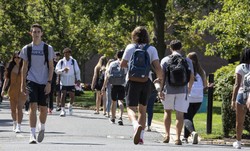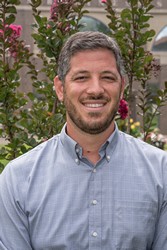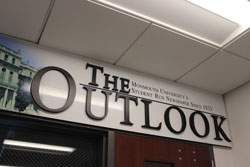With student debt at an unsustainable high of approximately $1.5 trillion, advocates say that free education could reform the consumerist business model that drives universities’ tuition hikes.
“We’re the only country that has turned universities into non-learning centers,” Kenneth Mitchell, Chair of the Department of Politics and Sociology and an Associate Professor of Politics, said. “American education has become let’s build another sports stadium, form another club, or hire more administrators. The cost of going to university is not directly tied to getting an education.”
Mitchell’s critique of higher education’s priorities is echoed by Johanna Foster, FAMCO President and an Associate Professor of Sociology. She said, “In the last few decades, as part of the expansion of capitalism and the need for new internal markets and commodities, higher education has been hijacked by commercial interests.”
The structure of higher education in America stands in stark contrast to universities around the world. Pia Ruggles, Ph.D., who completed her schooling in Denmark where higher education is free, spoke about the American system. She said, “There is such a high focus on sports. The money needs to come from somewhere, and it takes a tremendous amount of overhead to fund sports.”
The money used to fund non-academic ventures comes from tuition. The way universities distribute capital has made students question if free education is attainable. Nicholas Coscarelli, a senior political science student, said, “We can throw as much money as we want at schools to publicly fund higher education, but we need to ensure that the money is being allocated to the proper outlets.”
Ruggles advocates that proper implementation of free education would eliminate universities consumerist structure. She said, “In Demark, the entire educational system is solely based on academics because taxpayers should not be paying for unrelated projects.” She explained that if America were to implement free education, universities would feel pressure from taxpayers to focus on and invest in academics.
Similarly, Mitchell wants to simulate the predicted effects of free education through a test case. “I would love to see a governor take one of the public universities and get rid of all sports and cut half the administrators that are not directly involved with students and see what the final price tag is,” he said.
Using Monmouth as a yardstick, Mitchell explained the anomaly of how American universities currently operate. “Last year, former President Greg Dimenna basically implied that students should feel fortunate they only got a four percent tuition increase, in a country where inflation is under three percent.”
Continuous tuition increases would inevitably restrict working-class students’ access to education. “People say that liberal arts degrees are going down but take a look at the Ivy Leagues. Suddenly, there are Latin majors. The levers of power, prestige, and wealth in this country get to study the liberal arts. Working people get to do marketing,” Mitchell said.
Foster agrees that this for-profit cycle is oppressive. “The costs of higher education simply reproduce class and racial inequalities,” she said.
“College should be free or highly subsidized by the state. We do not have a shortage of funding to do this. We just prioritize federal and state budgets that distribute funding in morally suspect ways,” Foster said.
Still, the nuances of actually executing free education remain. John Henning, Ph.D., Dean of the School of Education, said, “Education is never ‘free.’ Someone always pays for it. The question is who. If the burden is put on the taxpayer, then we as a society are saying that education is so valuable to the future of our society that it is worthwhile for taxpayers to pay the bill.”
Part of Democratic presidential candidate Elizabeth Warren’s platform is free higher education. She proposed, “New federal investment in public higher education that will eliminate the cost of tuition and fees at every public college in America. The federal government will partner with states to split the costs of tuition and fees and ensure that states maintain their current levels of funding on need-based financial aid.”
Henning said, “Funding for higher education will create a partnership between those who directly benefit from education, individuals, and those who indirectly benefit, by living in a country with a highly educated citizenry.”
“By investing in education, we are investing in our most important national resource – our people,” Henning added.
PHOTO COURTESY of Monmouth University




